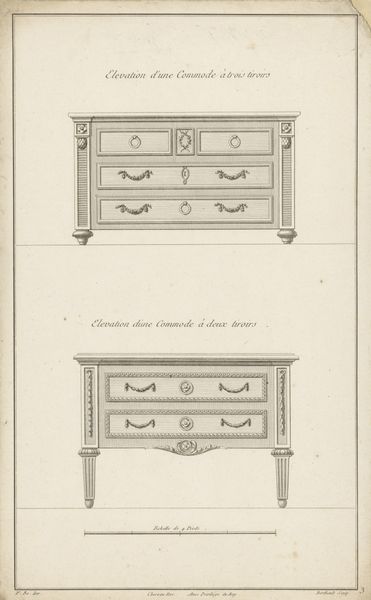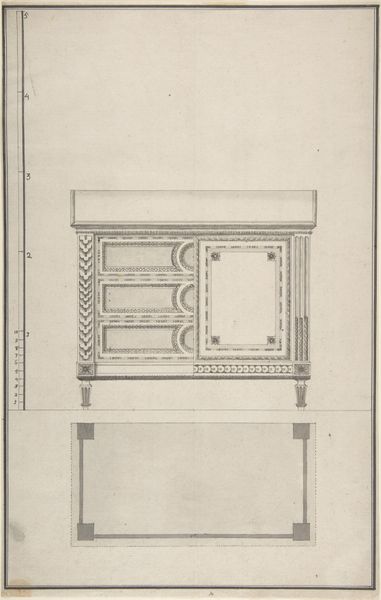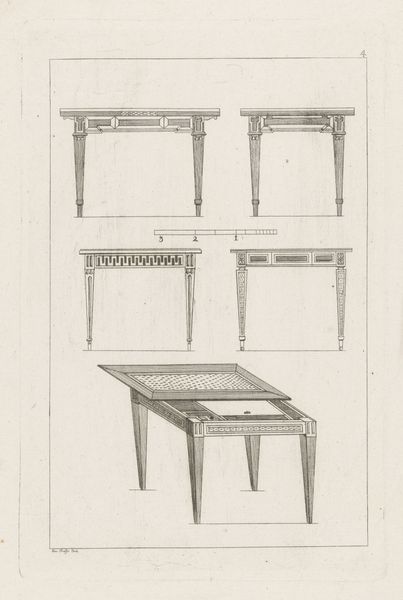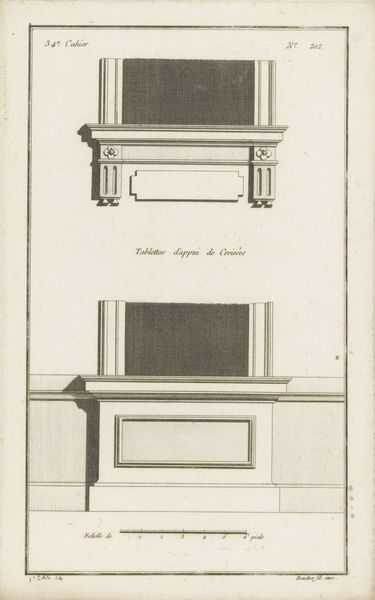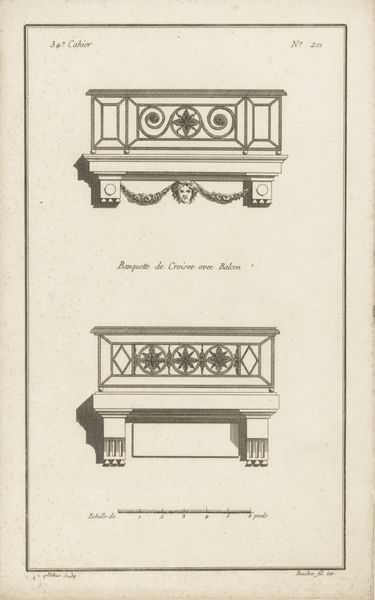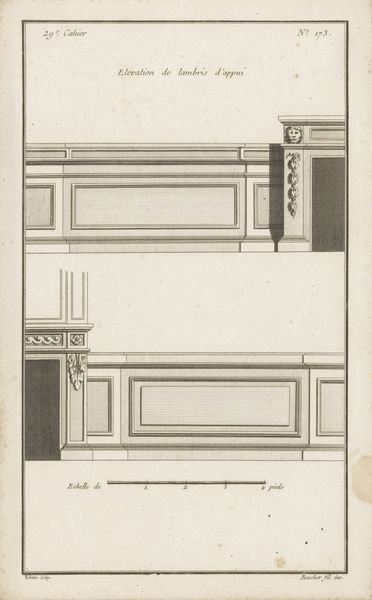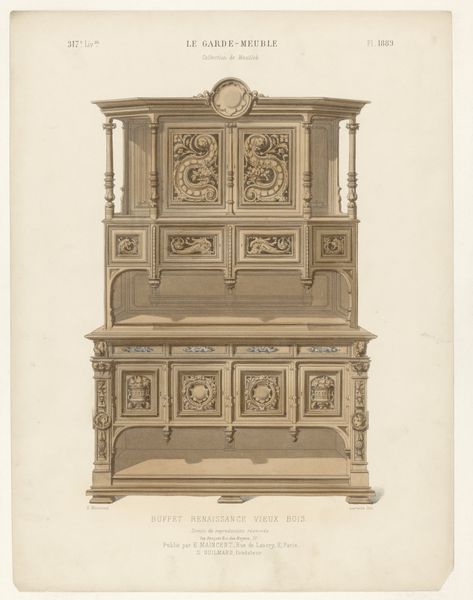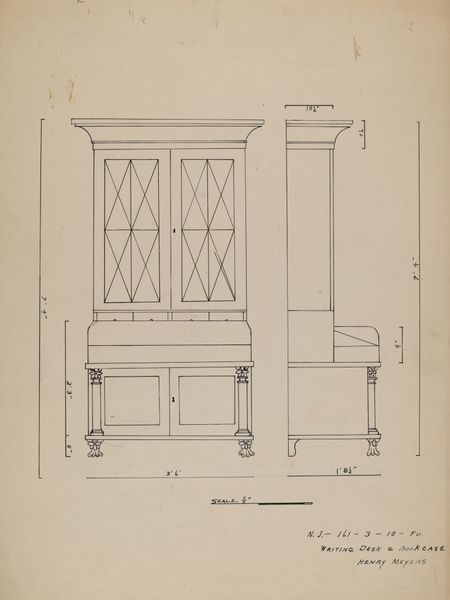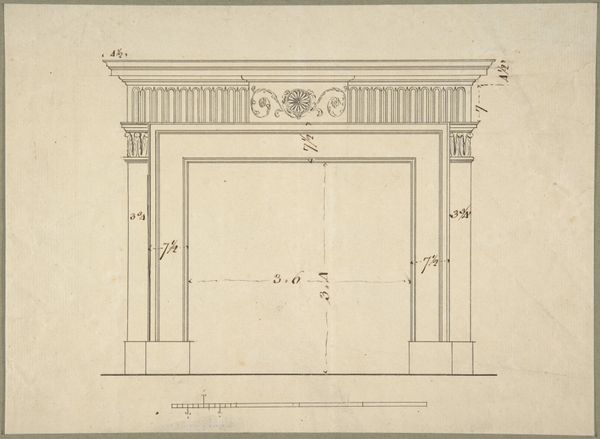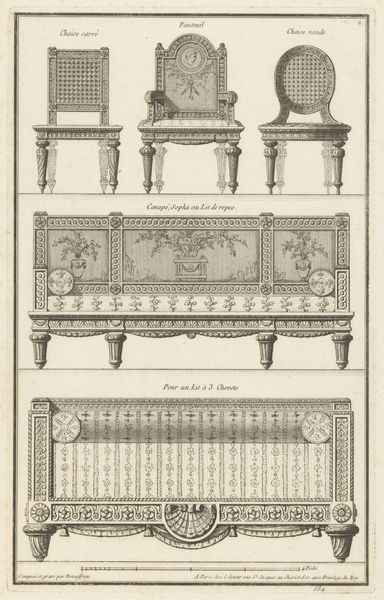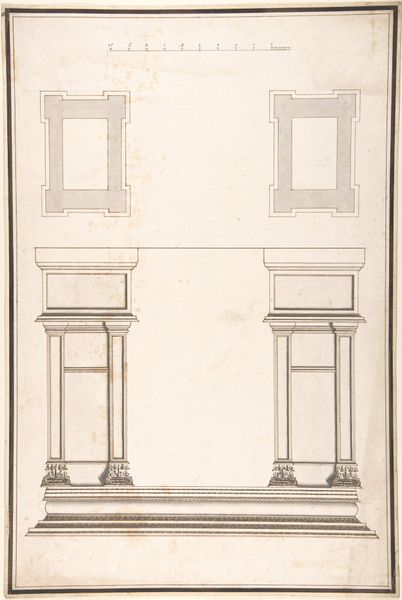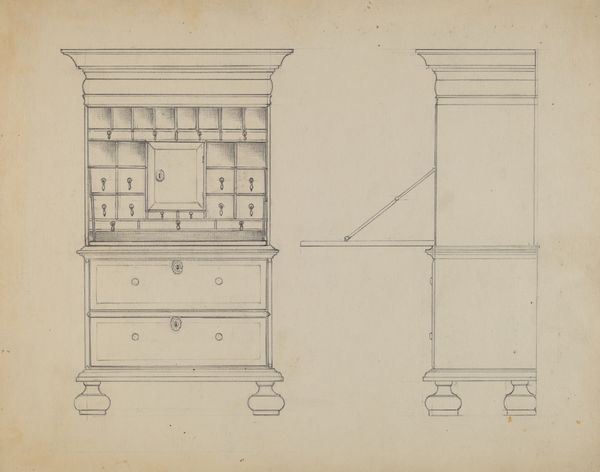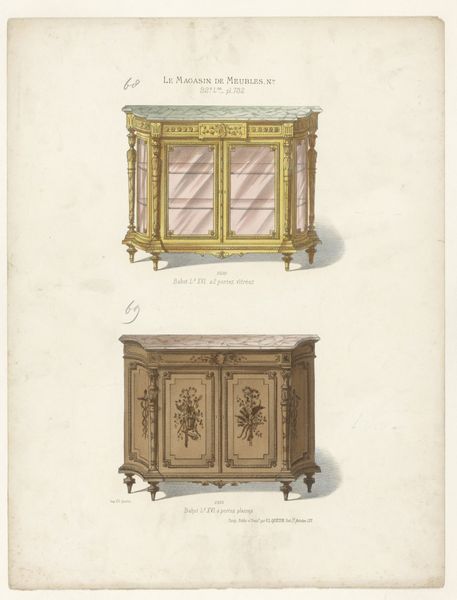
drawing, print, engraving, architecture
#
drawing
#
neoclacissism
# print
#
form
#
line
#
engraving
#
architecture
Dimensions: height 358 mm, width 222 mm
Copyright: Rijks Museum: Open Domain
Curator: Look at this print from our collection here at the Rijksmuseum. It’s an engraving entitled "Twee lage buffetkasten," which translates to "Two Low Sideboards," dating from between 1752 and 1794. It’s by Pierre Gabriel Berthault. What catches your eye first? Editor: The rigidity! It's almost oppressively formal. I mean, even though it's a drawing, it evokes a certain starkness of Neoclassical design. Like a stage set waiting for drama, or, you know, at least a very lavish dinner party. Curator: You’ve keyed into the Neoclassical perfectly. Berthault meticulously details two possible designs, rendered with fine lines, to showcase the pure geometry of the buffets themselves. Notice how even the ornamentation, those little leaf details and medallions, is rigorously symmetrical? Editor: Yes, the line work gives the piece this precision. It's not just about representation, it feels instructional, right? Like a blueprint. The work that went into designing those flourishes seems quite at odds with its overall intention to communicate useful detail about material and process. Curator: Absolutely. It blurs the line between artistic expression and practical design, which in my view invites interesting considerations about craft. Someone had to produce this print using techniques rooted in skill and material knowledge, engraving requires the patient carving into metal. We’re often preoccupied by design but perhaps underestimate execution. Editor: Good point! It is really the making, the transfer of artistic labor, that impresses most about this piece. Consider also who the consumers would have been at the time? Did ordinary artisans ever see such refined plans? Curator: Likely, more affluent patrons were the target audience, which probably perpetuates socio-economic gaps by guarding certain aesthetic knowledge. But maybe there's inspiration, even ambition, in its sharp detail for all. Editor: Definitely something beautiful, or at least thought-provoking, about the potential in seeing an everyday object dissected like this. I almost wish I could commission one for my own sideboards. Curator: A beautifully made manifesto for, or maybe even against, design itself, then.
Comments
No comments
Be the first to comment and join the conversation on the ultimate creative platform.
